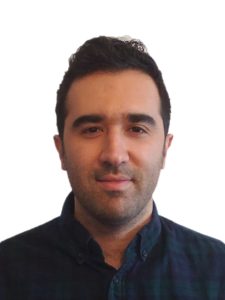The Study Demonstrates How Brains Form Visual Maps

NEW YORK, NY – ICYMI, in a new paper entitled “A Theory of Cortical Map Formation in the Visual Brain” published in Nature Communications, SUNY College of Optometry Distinguished Professor Dr. Jose Manuel Alonso and PhD student Sohrab Najafian, offer a theory that explains how the brain forms visual maps. The theory proposes that map diversity emerges from variations in the sampling density of visual space. As sampling density increases during evolution, the cerebral cortex receives more neuronal inputs per visual point that are accommodated in larger cortical areas of larger brains.
The abstract, published in Nature Communication, can be found below.
“The cerebral cortex receives multiple afferents from the thalamus that segregate by stimulus modality forming cortical maps for each sense. In vision, the primary visual cortex maps the multiple dimensions of the visual stimulus in patterns that vary across species for reasons unknown. Here we introduce a general theory of cortical map formation, which proposes that map diversity emerges from species variations in the thalamic afferent density sampling sensory space. In the theory, increasing afferent sampling density enlarges the cortical domains representing the same visual point, allowing the segregation of afferents and cortical targets by multiple stimulus dimensions. We illustrate the theory with an afferent-density model that accurately replicates the maps of different species through afferent segregation followed by thalamocortical convergence pruned by visual experience. Because thalamocortical pathways use similar mechanisms for axon segregation and pruning, the theory may extend to other sensory areas of the mammalian brain.”

“Mapping our visual world in a small piece of cortex can be challenging. Remarkably, species as different as primates, carnivores, and scandentia appear to follow a common strategy and all map stimulus orientation in a pinwheel pattern,” said Dr. Jose Manuel Alonso. “Our theory proposes that map diversity emerges from variations in the sampling density of visual space. We are still far from gaining access to accurate maps of the human brain but having a theory of brain map formation is an important first step towards reaching this milestone.”
Dr. Alonso did his M.D., Ph.D. at the University of Santiago and University Autónoma de Madrid in Spain. He joined the laboratory of Torsten Wiesel at The Rockefeller University, initially as a postdoctoral student and later as a research associate. Currently, he is a Distinguished Professor of Biological and Vision Sciences at SUNY College of Optometry. He is interested in understanding the function of the thalamo-cortical and intra-cortical circuitry of the visual system.
Sohrab Najafian received his MSc in biomedical engineering from Iran University of Science and Technology. He is now a fourth year PhD student working under supervision of Dr. Jose-Manuel Alonso. He is currently working on a model to explain brain maps in visual cortex.
You can read the full study here. Additionally, a short video that explains the process may be found here.
MEDIA CONTACT: Dawn Rigney | drigney@sunyopt.edu | 212-938-5600
###
About SUNY College of Optometry
Founded in 1971 and located in New York City, the State University of New York College of Optometry is a leader in education, research, and patient care, offering the Doctor of Optometry degree as well as MS and PhD degrees in vision science. The College conducts a robust program of basic, translational, and clinical research and has 65 affiliated clinical training sites as well as an on-site clinic, the University Eye Center. SUNY Optometry is regionally accredited by the Commission on Higher Education of the Middle States Association of Colleges and Secondary Schools; its four-year professional degree program and residency programs are accredited by the Accreditation Council on Optometric Education of the American Optometric Association. All classrooms, research facilities and the University Eye Center, which is one of the largest optometric outpatient facilities in the nation, are located on 42nd Street in midtown Manhattan. To learn more about SUNY Optometry, visit www.sunyopt.edu.